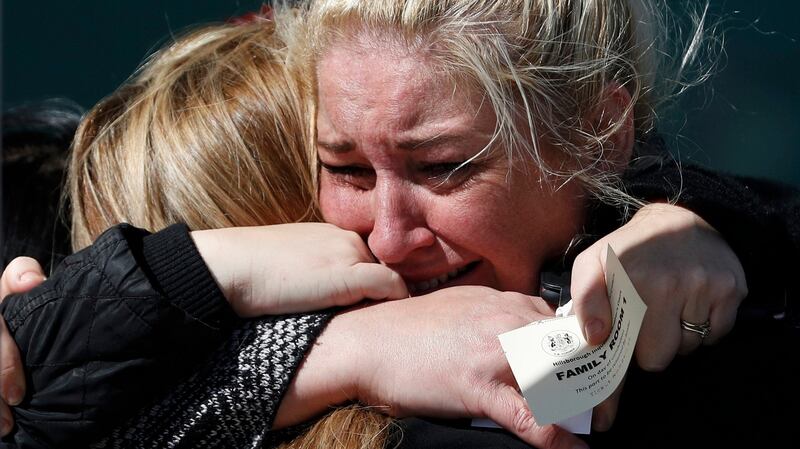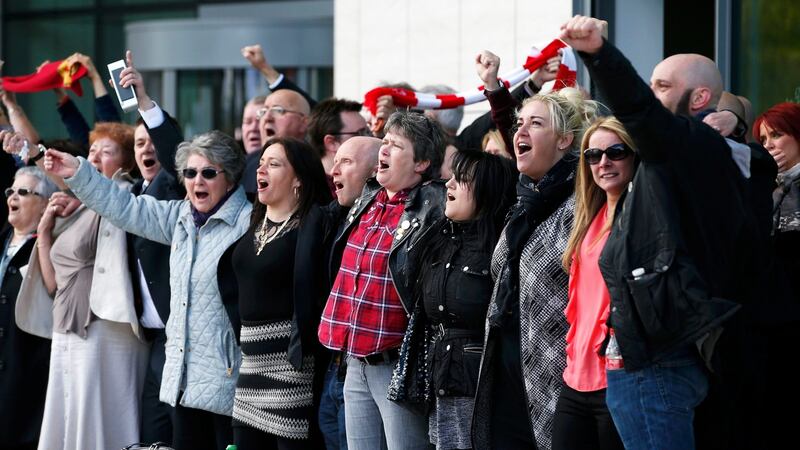The 96 Liverpool fans who died in the Hillsborough disaster were unlawfully killed, the inquests jury has concluded.
The jurors were told they could only reach that determination if they were sure of four “essential” matters concerning the deaths at the 1989 FA Cup semi-final. They had to be convinced that overall match commander chief superintendent David Duckenfield owed a duty of care to those who died in the disaster, and that he was in breach of that duty of care.
Thirdly, they would need to be satisfied that his breach of duty caused the deaths and, fourthly, that it amounted to “gross negligence”. They concluded it was unlawful killing by a 7-2 majority. The conclusion was greeted with sobbing and cheers at the hearing in Warrington, England.


The jury also ruled that fan behaviour did not cause or contribute to the tragedy.
The jury also found that both the police and the ambulance service caused or contributed to the loss of lives in the disaster by an error or omission after the crush in the west terrace had begun to develop.
Stadium layout
Lead features of the design, construction and layout of the stadium considered to be dangerous or defective, caused or contributed to the disaster, the jury decided.
Jurors also found the safety certification and oversight of the stadium also caused or contributed to the tragedy. They reached the same conclusion in relation to Sheffield Wednesday's management and/or preparation for the semi-final tie and the dangerous situation that developed at the Leppings Lane turnstiles and in the west stand.
However, the jury concluded that the club’s conduct on match day may only have caused or contributed to the same situation. The club’s then consultant engineers, Eastwood & Partners, should also have done more to detect and advise on any unsafe or unsatisfactory features the stadium which caused or contributed to the disaster.
Emotionally charged day
After the key conclusions were delivered, someone in court shouted “God bless the jury”.
The jurors were given a round of applause as they left the courtroom. Lawyers acting for relatives of the victims said the jury’s conclusions had completely vindicated the bereaved families’ tireless 27-year fight for justice.
The jury of six women and three men gave their decisions on an emotionally charged day for relatives of the 96, many of whom were at court for the conclusion of the longest jury proceedings in British legal history.
Last Wednesday the jury indicated to the court in Warrington that unanimous decisions had been reached on every question apart from question six — unlawful killing. They were given a majority direction yesterday and quickly indicated they had reached a majority decision on the outstanding question.
Two year inquest
The fresh inquests began on March 31st, 2014, in a specially built courtroom in Warrington. The 1991 accidental deaths verdicts from the original inquests were quashed following the 2012 Hillsborough Independent Panel report after a long campaign by the families of the dead.
Dozens of relatives of the victims have attended each of the more than 300 days the court has sat at Bridgewater Place on the Cheshire town’s Birchwood Park business park.
At the start of the inquests, the coroner said none of the victims should be blamed for their deaths. Emotional tributes to each of the 96 were then delivered by family members in the form of personal portraits.
Family reaction
Barry Devonside, who lost his only son Christopher (18) in the Hillsborough disaster said he had “dreamt” of the moment a jury decided the 96 victims were unlawfully killed.
Mr Devonside, who has attended every day of the inquest, said: “Today we gained the confidence from the jury that what we’ve tried to do for 27 years is to bring justice for those who never went home. I always hoped and dreamt that we would get this decision. I’m glad we did. We did our best — we couldn’t do any more.” He said the conclusions delivered by the jury were “far more than expected”, adding: “I’m so, so pleased.
1989 events
The Hillsborough disaster unfolded during Liverpool's cup tie against Nottingham Forest on April 15th, 1989 as thousands of fans were crushed at Sheffield Wednesday's ground.
Mr Duckenfield gave the order at 2.52pm to open exit Gate C in Leppings Lane, allowing around 2,000 fans to flood into the already packed central pens behind the goal.
PA









